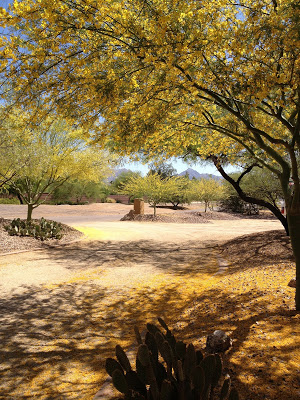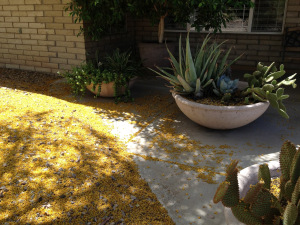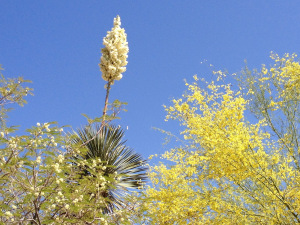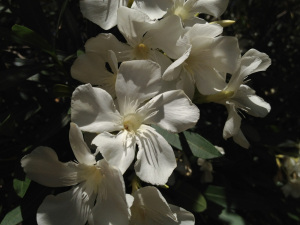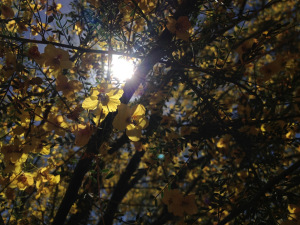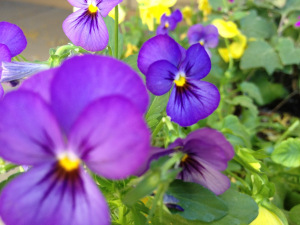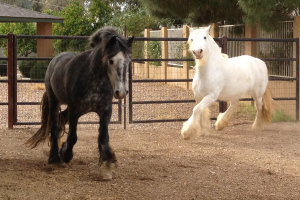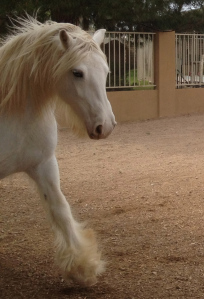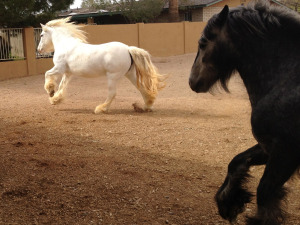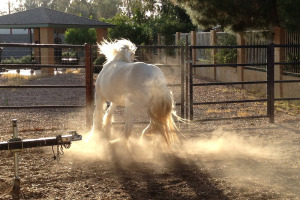Desert in bloom
Living in the desert can be great...sometimes. We have absolutely beautiful winters here. While the rest of the country is freezing and shoveling snow, we* are playing golf and drinking freshly squeezed orange juice.
But summer.
ugh.
Summer is creeping up on us. Last weekend we had our first round of 100+ temperatures. Like a little teaser, it only lasted a few days. Then we got the very welcome and much needed blessing of a brief rain shower.
In the desert you find yourself yearning for rain like a castaway scans the sea for ships on the horizon. It is a sign of life, sent from faraway.
We haven't had nearly enough rain lately. Arizona's yearly average for rain is about 7 inches. Last year, the Phoenix area totaled a little over four inches - for the whole year. This year so far we have not even reached .75 inches of rain.
Is a drought in the desert redundant?
All I know is, it's dry. Too dry. And when it does rain, this is how I feel:
Tim Robbins in The Shawshank Redemption, one of the best movies ever.
But in between winter and summer, we do get a little nibble of spring. It's that sliver of time before all the non-native plants start turning brown from the heat.You can tell it's spring when the Palo Verde trees bloom.
The Palo Verde ("green stick") is Arizona's state tree, and gets its name from the green bark it wears.
In the spring, these trees burst into color, covered in yellow flowers, and virtually hum with the presence of bees, busily drinking the nectar and pollinating away.
When the blooms expire, they carpet the ground.
This yucca is about 25 feet tall.
sage
oleanders (non-native), a hedge.
And since I am a midwesterner at heart, I have to have little bits of annual color on my front porch.
I wanted to get a picture of a Saguaro Blossom. Saguaros (pronounced sah-WAH-ro) are those huge cactuses (cacti) that you see in the stereotypical desert panorama:
The state flower of Arizona, the Saguaro blossom forms in clusters at the top of each arm of the cactus. They bloom April-June, and since they open at night, the main pollinators are nectar-drinking bats.
Did you ever wonder about the pleated structure of a cactus? Cacti are pleated to allow for the expansion that occurs when the plant is able to soak up large amounts of water, as it does in monsoon season. When the cactus dries out, the pleats deepen and become more pronounced. This has the added effect of being able to provide shade for itself from the heat of the sun.
Since you pretty much need a ladder to get a picture of the saguaro blossom, I thought I would just search for a good shot for you on the net. I have no idea how I'd get a ladder into my Civic.
Here you go:
And just for kicks, here are some new horse pictures:
As always, thanks for stopping by.
* and by "we," I mean everyone else in Arizona. I don't golf.
**But I do drink freshly squeezed orange juice...
mmmmmmmm it's yummy.




